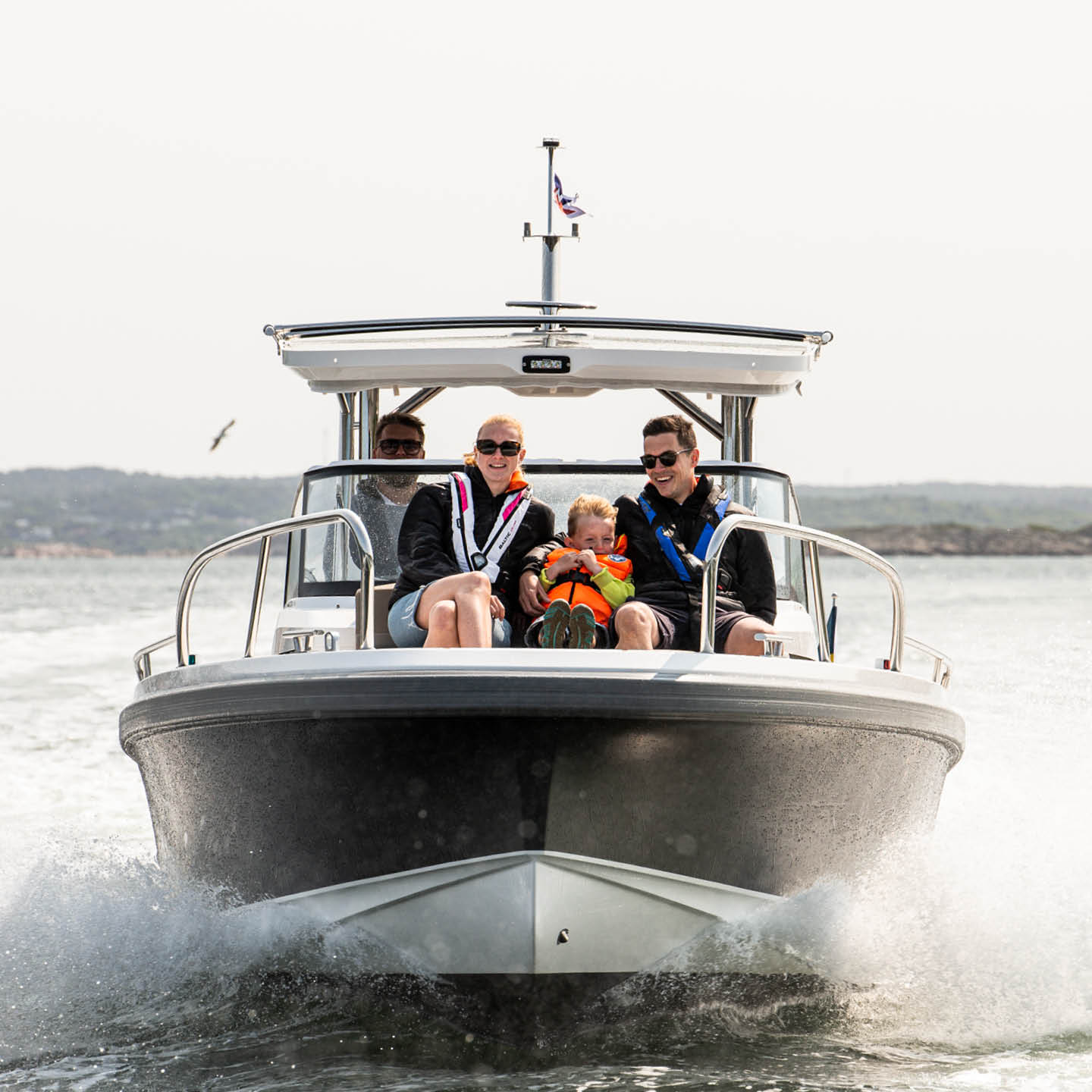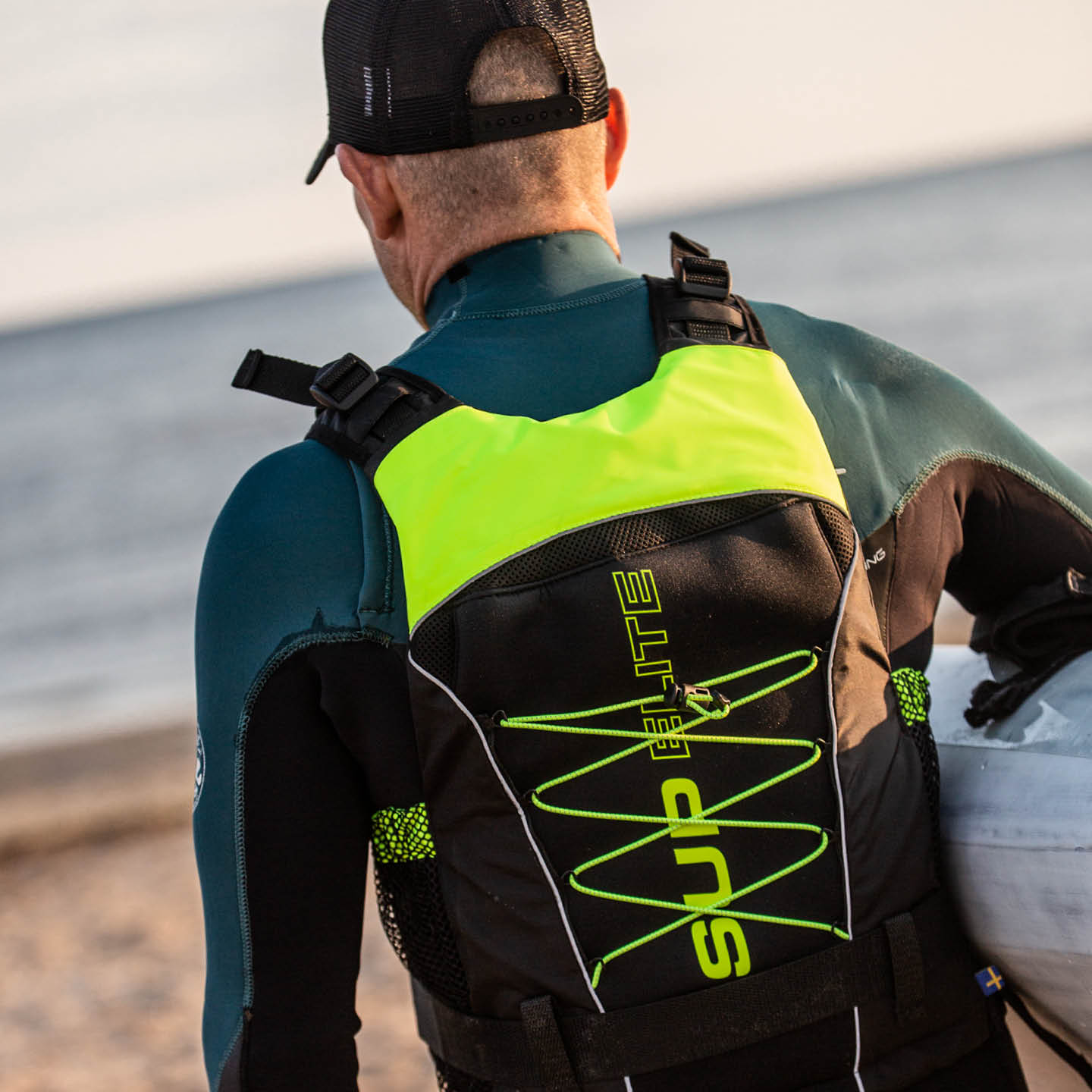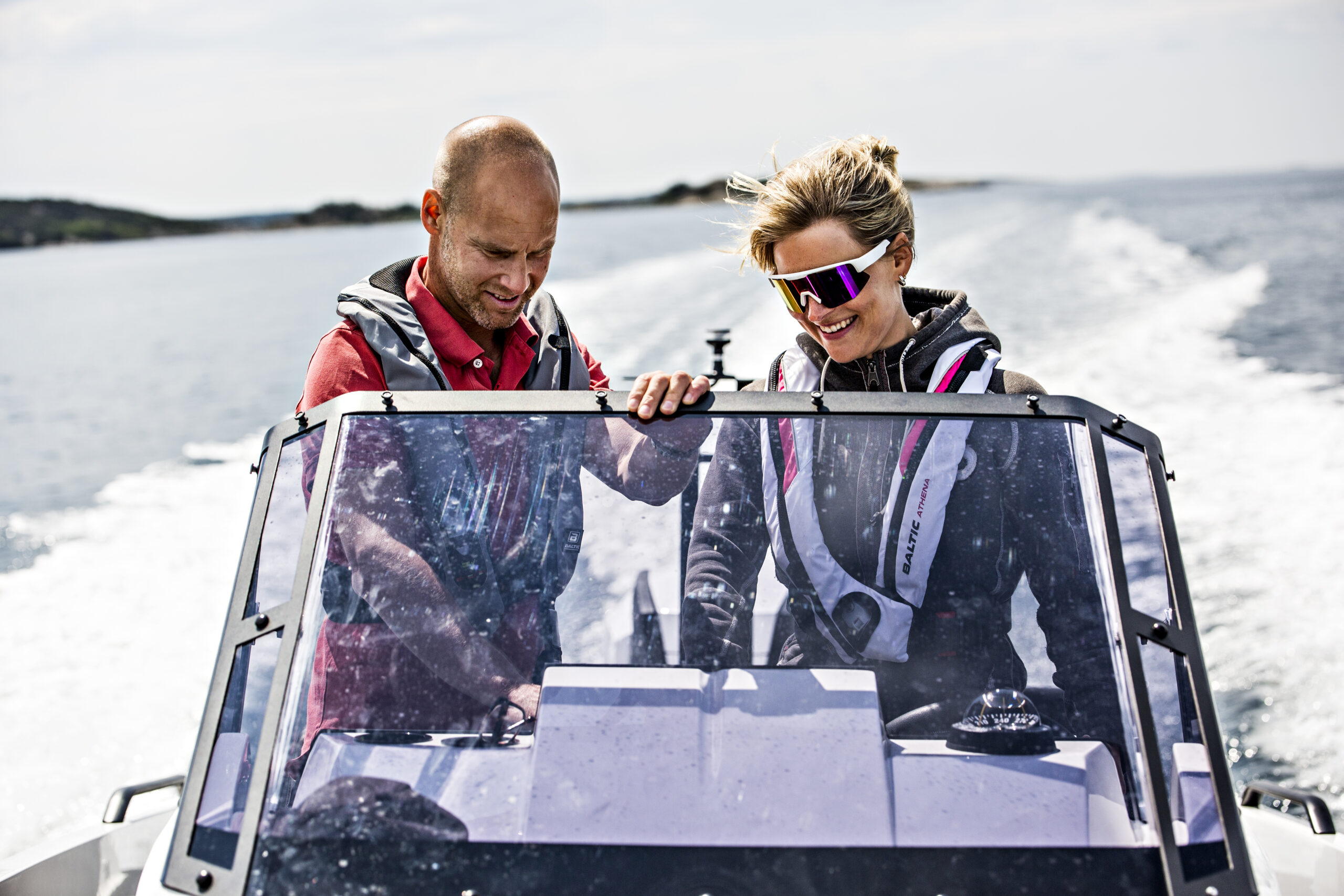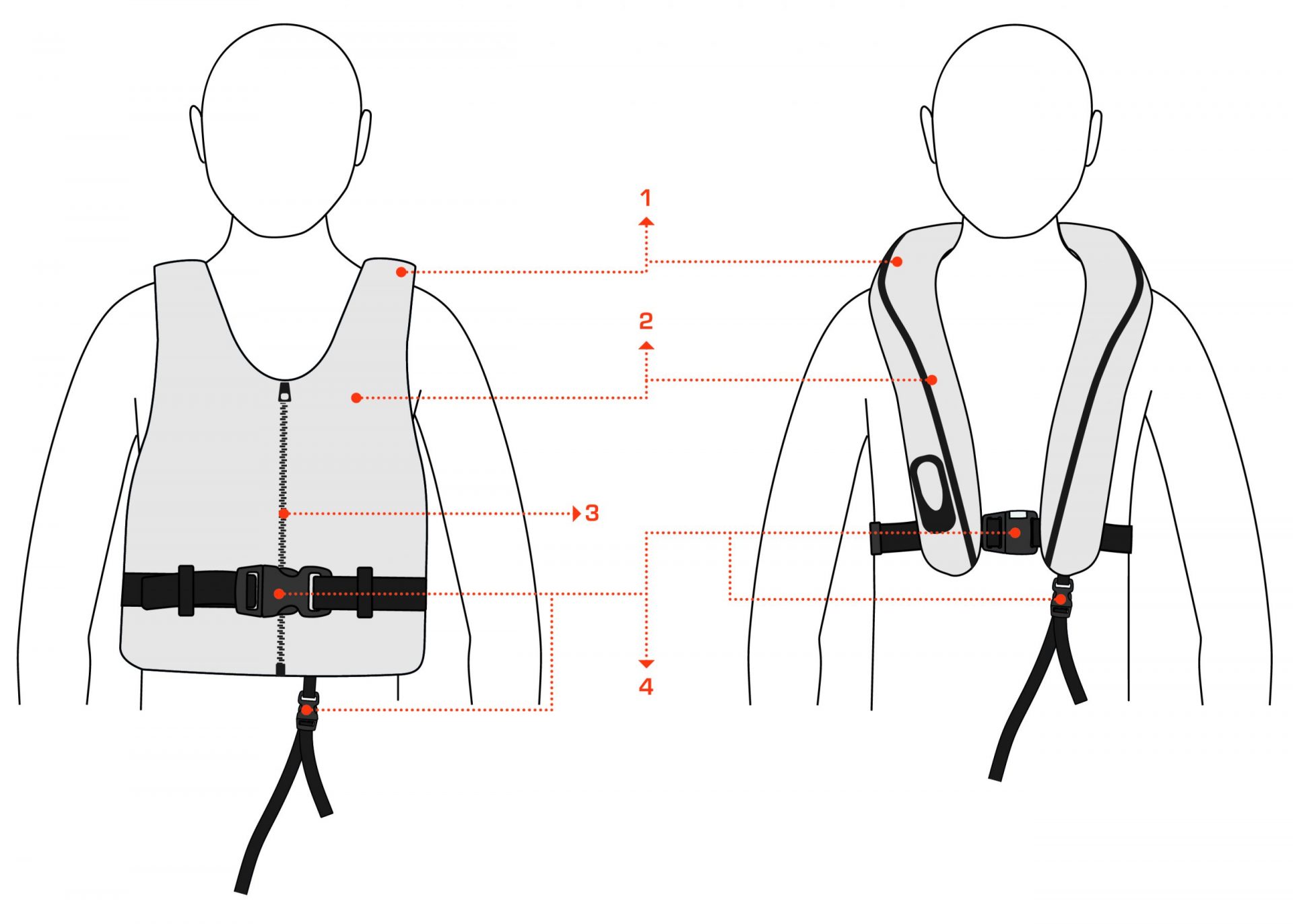How to choose a lifejacket
WHAT IS THE DIFFERENCE BETWEEN VARIOUS TYPES OF LIFEJACKETS?
The product’s called lifejackets are divided into several different categories, most commonly referred to as lifejackets and buoyancy aids. Here is a description of what characteristics distinguishes these groups.

LIFEJACKETS (100N):
A lifejacket saves lives. It is designed to always turn the user to a supine position and keep the airways above the water surface by a good margin, even if the user has lost consciousness or cannot swim. Lifejackets are available with inflatable lung or with inherently buoyant material, common to all is that when inflated or in the water position they have most of the buoyancy force on the front and a sturdy collar that supports and holds up the head. A lifejacket is the obvious choice for people who cannot swim.
Lifejackets always have a carrying capacity of at least 100N. The inflatable models are divided into different classes depending on the conditions under which they are to be used. An automatic inflatable lifejackets inflates when the user ends up in the water, while a manual life jacket must be activated by the user.

BUOYANCY AID (50N):
These lifejackets that have a carrying capacity of 50 Newtons, they are officially buoyancy aids, have a slightly simpler design than lifejackets. A 50N buoyancy aid keeps you afloat but lacks a collar to support your head. It has the buoyancy force more evenly distributed between the front and back and therefore does not guarantee to turn an unconscious person to a supine position. A 50N buoyancy aid is therefore recommended for swimmers who weight at least 25kg.
All products in Baltic’s range of flotation clothing are tested and approved according to the 50N standard.

WHAT TYPE OF LIFEJACKET SHOULD I CHOOSE?
An ergonomically designed lifejacket is comfortable to wear even for prolonged periods of time. We, at Baltic attach great importance to user-friendliness and fit when we develop our products. One goal is to make the lifejacket as simple and comfortable as possible to wear and thereby increase the possibility that it is actually worn. We have a wide range of models so that you can always choose the lifejacket that suits you and your activity best and your shape. Since a lifejacket has a lot of buoyancy at the front, it can be difficult to swim in. Therefore, we recommend a 50N buoyancy aid for activities such as dinghy sailing, kayaking and other watersports where swimming is more common. In this category there are a number of differ options adapted for different users and conditions. In summary, we suggest the following:
- Lifejacket for keelboat/yacht sailing and motorboating, ideally for those who cannot swim.
- 50N buoyancy aid for all water sports where you are more regularly in the water.
THE RIGHT SIZE OF LIFE JACKET!
It is essential your lifejacket should fit! It should sit firmly, but comfortably, and not slide around on the body. This is actually more important than saying the exact correct weight on the label. Children should never wear lifejackets “to grow in to”.
When trying on a lifejacket make sure that all zippers and buckles are properly fastened and adjusted. Make sure that the lifejacket does not slide up towards the chin when you have your arms stretched upwards (test this by asking someone for help to lift gently in the shoulders of the lifejacket). The lifejacket should sit firmly on the body and there should be no air gap between the lifejacket and the shoulders.
Think:
- No air between the lifejacket and the shoulders.
- Firmly on against the body.
- Closed zipper.
- Buttoned buckles and adjusted straps.

ISO STANDARD
50 Newton / EN ISO 12402-5
Buoyancy aids that keep a person afloat, suitable for protected waters. Requires swimming skills as they do not help the user to supine. For swimmers from 25 kg and up.
100 Newton / EN ISO 12402-4
Lifejackets in the 100N class have buoyancy concentrated at the front and have a large collar. The vest helps the user to back position and keeps the airways above the water surface. 100N life jackets are suitable for both swimmers and non-swimmers.
150 Newton/ EN ISO 12402-3
Inflatable life jackets which, when inflated, have good turning ability, help the user to lie back and keep the airways above the water surface. Available with automatic or manual gas inflation. For people from 40 kg.
275 Newton/ EN ISO 12402-2
Inflatable lifejackets which, when inflated, have good turning ability, help the user to lie back and keep the airways above the water surface. Suitable for open water, extreme weather conditions and in combination with protective clothing and /or heavy equipment. Available with automatic or manual gas inflation. For people from 40 kg.